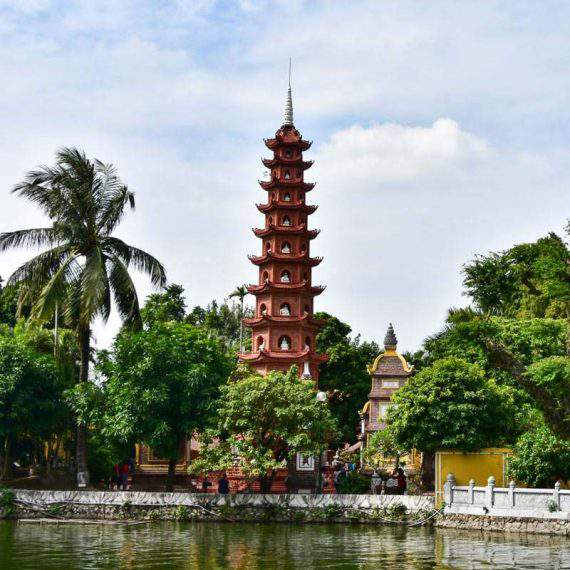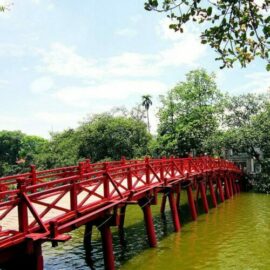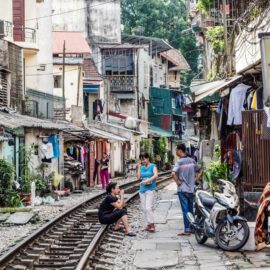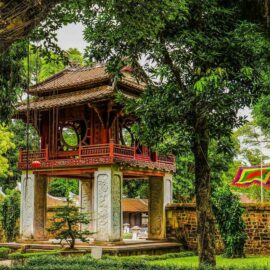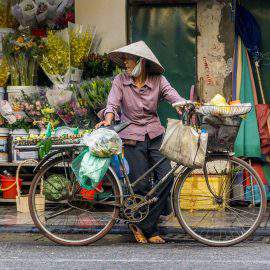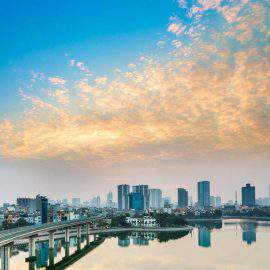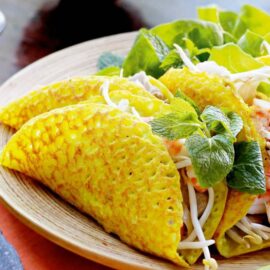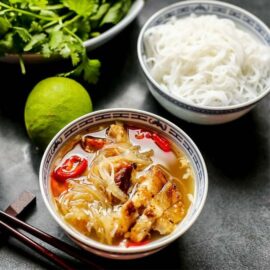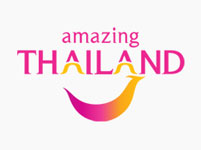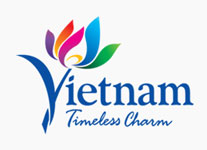Hanoi
Hanoi became the capital of Vietnam in 1010 under King Ly Thai To, named Thang Long (Ascending Dragon). In 1831, Thang Long was renamed Hanoi, which translates rather poetically to “the city inside the river”
You will feel a magical vibration while wandering around this thousand year city, with all your senses, it's hard to explain why. Amble down the labyrinth-like alleys of the Old Quarter, and see the hidden pagodas and temples waiting to be explored. Feel the indomitable spirit of the Vietnamese when visiting historical sites such as Thăng Long Imperial Citadel, the Ho Chi Minh Mausoleum, Hoa Lo Prison, One Pillar Pagoda, and Hoan Kiem Lake. Whether it’s the rich culture and heritage shown in the romantic French-influenced colonial architecture or the tantalizing smells of pho and other tasty street foods wafting through the air, the charm and atmosphere are palpable.
Viajes a medida
Cambodia & Vietnam Discovery 15 days
Best of Vietnam
Things to do
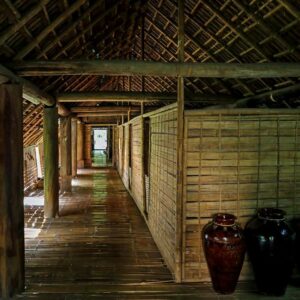
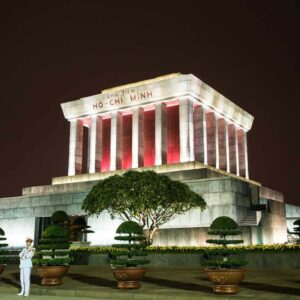


Photo gallery
Travel guide
Time to visit
You can visit the pulsing Hanoi at any time of the year. Hanoi is best when visited in the late spring and early summer months between March and May or during the autumn from September to November. Between March and May, the temperature begins to rise as the city shakes off the winter cold, offering balmy days and cool evenings to enjoy sight-seeing. During the autumn, Hanoi cools down from its hot and rainy summer with a mixture of sunny and cool days, perfect for sipping a “caphe sua da” in any lakeside cafe, watching the world go by. On Tet Holiday and Independence Day, Hanoi stands out with its peaceful atmosphere.
Accommodation
Accommodation in Hanoi is centered around Hoan Kiem Lake in the popular Old Quarter. Small family-run styled hotels cost between 5 – 20 USD per night while a luxury stay at Sofitel Metropole will run above 200 USD per night. Guests looking for a quiet respite away from the hustle and bustle of Hoan Kiem District can head north of the city center to the quieter areas of Ba Dinh and Tay Ho District, where hotels like Pan Pacific and Intercontinental can be found with the per night average a little over 100 USD. Trendy airbnbs ranging between 10 – 15 USD are also on the rise, with independent travellers looking for more personal experiences.
Food & drink
A foodie paradise, Hanoi is chockfull of amazing culinary treasures, from small noodle shops and street food delicacies to trendy expat start-ups and fancy restaurants. A typical Vietnamese dish at a local shop characterized by small plastic stools and low tables will typically run between 2 – 3 USD per bowl or plate, while a western-styled meal in a restaurant with normal sized tables and chairs will run between 6 – 12 USD per person depending on what’s ordered. Expensive restaurants usually found in chic hotels are usually starting around 25 USD for main courses, but it depends on the type of restaurant and time of day. For a night out, cocktails are usually around 5 USD per glass in most establishments, with draft beer going for 2 USD and bottled beer 3 USD. Bia Hoi, a type of outdoor beer garden, sell cheap beer for only 0.32 USD.
Some local dishes that you should try in Hanoi: Pho bo (beef noodles), Pho ga (chicken noodles), Bun Cha (Grilled Pork & Rice Noodles), Cha ca La Vong (La Vong grilled fish), Banh cuon (Steamed rice rolls), Banh Mi (Vietnamese sandwich), Cafe sua da (Vietnamese iced coffee), Nem ran (Fried spring roll), Bo cuon la lot (Grilled beef in piper lolot leaves)
Communication
Wi-Fi is prevalent throughout the city, whether in small cafes, mostly any restaurant, and all hotels. SIM Cards can be bought from main brands such as Viettel, Mobifone, and Vinaphone from USD2-3 and internet data for USD1-25 at nearly every shop on the street. In case of emergency, dial 113 for the police, 114 for fire, 115 for ambulance and first-aid. Most younger generations can speak a word or two of English, however even though many have studied, locals can be quite shy to speak to foreigners. Be patient and keep a smile on your face–everyone is trying their best!
Transport
The traffic in Hanoi is often unfathomable, with motorcycles, scooters, bicycles, taxis, cars, and 4 x 4s all clamboring for space, especially during commuting hours from 7:30 – 8:30 and 17:00 – 18:30. The ever-popular grab application is seen everywhere with motorbike taxi’s wearing their green uniforms, offering rides at a much cheaper, fixed rate than bargaining on the street with local “xe om”. Xe om’s can be arranged on the street corner for around 0.43 USD a km while taxis cost around 0.50 USD per km. Buses, often now with wi-fi connectivity, cost 0.30 USD and less per ride.
How to get to Hanoi
Air
Located 35 km outside of the city centre, Noi Bai international airport is the largest airport in northern Vietnam. There are 51 airlines operating with international flights to more than 20 destinations. You can easily find a direct flight to Hanoi from many places all over the world.
Train
From Hanoi train station, you can catch the train to the South (Hue, Da Nang, Nha Trang, Ho Chi Minh) and to Sapa (in the north)
Bus
With four bus stations, you can find buses to Hanoi from any provinces throughout Vietnam.
Our travel specialists

Sreyly Ye

Vivian Nguyen

Cristóbal Duong

Lucas Pham
Travel inspiration

Mundo Asia Tours Wins TripAdvisor Traveler’s Choice Award 2024!
We're thrilled to announce that Mundo Asia Tours has been honored with the prestigious TripAdvisor Traveler's Choice Award 2024! This recognition is a testament to our unwavering commitment to providing exceptional travel experiences and outstanding customer service.
View detail
Ha Long Bay – Cat Ba Archipelago: A World Natural Heritage Site
UNESCO designated Ha Long Bay as a World Heritage Site twice in 1994 and 2000. In 2004, Cat Ba Archipelago was recognized as a world biosphere reserve. On September 16, 2023, UNESCO officially recognized Ha Long Bay - Cat Ba Archipelago as the first inter-provincial...
View detail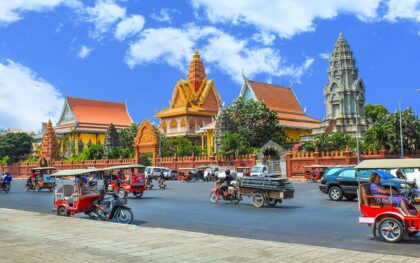
Best places to visit in Cambodia: top 10 destinations
Cambodia is a charming, mystifying kingdom where you can comtemplate the collision of ancient & morden world. UNESCO World Heritage ruins with tropical islands.
View detail¿Por qué Mundo Asia?
El éxito de su viaje es nuestro mayor placer
Mejor precio garantizado
Agencia sin intermediario, garantía de igualdad de precios
Viaje con tranquilidad
Pago al llegar, cancelación gratuita, sin tarifa de consulta
Experiencias auténticas
Momentos auténticos creados por expertos locales
Soporte instantáneo
Nuestros expertos locales ofrecen soporte 24/7 en español






